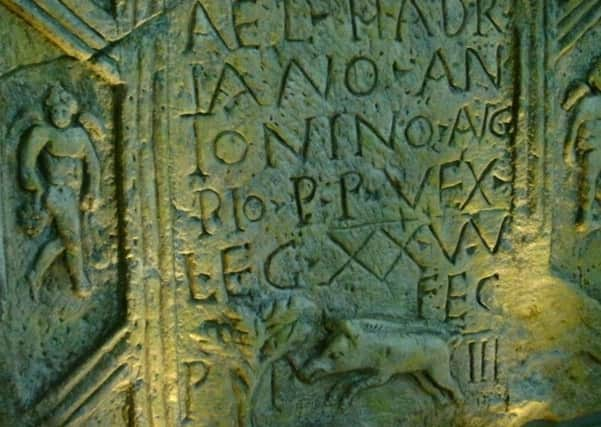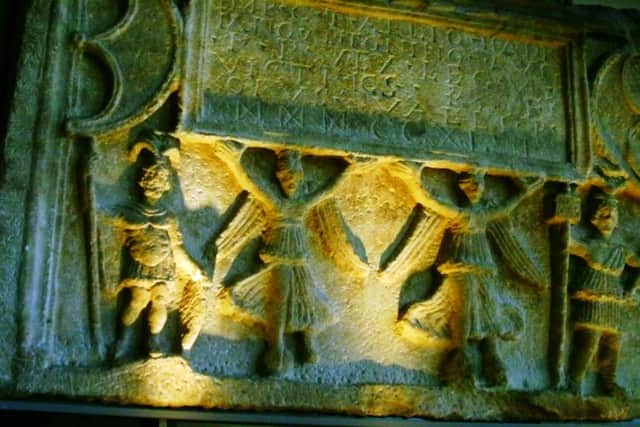Falkirk's gory Roman wall art was in technicolour


Scenes of combat in which triumphant Romans crush their Celtic enemies were painted in gory, lifelike tones - and even the beak of the Roman eagle was coloured red.
The lurid original pigments of stones now in Glasgow’s Hunterian Museum have been revealed by cutting edge research by x-ray and laser technology.
Advertisement
Hide AdAdvertisement
Hide AdUniversity of Glasgow archaeologist Dr Louisa Campbell says these technicolour stones were Roman propaganda against the indigenous local communities.


She said: “The public are accustomed to seeing these sculptures in bland greys, creams, white (for marble) and don’t get the full impact that they would have had on the Roman and indigenous audiences 2000 years ago.
“These sculptures are propaganda tools used by Rome to demonstrate their power over these and other indigenous groups - it helps the Empire control their frontiers and it has different meanings to different audiences.”
Some of the colour sculptures tell stories of different Roman legions and their loyalty to the Emperor, as well as the units’ part in the construction of the Antonine Wall.
Advertisement
Hide AdAdvertisement
Hide AdDr Campbell added: “These sculptures are unique to the Antonine Wall and the best preserved example of frontier statuary from any Roman border.
“They were embedded into prominent positions on the wall (probably crossing points at militarised forts) for full visual impact.
“The colours would have been a very powerful addition to bring these scenes to life and aid in the subjugation of the northern peoples.”
Her project - Paints and Pigments In the Past (PPIP) - is part funded by Historic Environment Scotland (HES)’s Archaeology Programme.
Advertisement
Hide AdAdvertisement
Hide AdThe aim is to identify the colours of paint pigments applied to the sculptures from the Wall and then to recreate an authentic palette of colours to allow them to be physically and digitally reconstructed.
Most of the examples available were discovered between the 17th and 19th centuries, and are on display at the University’s Hunterian Museum.
Dr Campbell said: “Many contain exquisitely carved scenes of combat, religious practice and architecture.
“It is likely that the sculptures were originally painted for maximum impact. However over the course of time the paint has faded and only trace elements are left.
Advertisement
Hide AdAdvertisement
Hide AdSpecific colour shades were used for particular subjects - reds in letters, Roman cloaks and military standards, different colours of red depicting spilled blood of indigenous captive warriors, and ochres (probably applied in layers) to provide life-like skin tones.
Dr Campbell suggests the red on the beak of the Roman eagle symbolises it “feasting on the flesh of her enemies”.
The next phase of the research will aim to find whether other stone statuary, including Pictish symbol stones and other early medieval sculpture was adorned in colour.